Working closely with our colleagues in the Engineering Directorate and external partners, we conduct basic and applied research to support the fabrication of targets for the National Ignition Facility (NIF). These targets are complex, three-dimensional microassemblies with plastic, metal, and ceramic components that range in size from nanometers to millimeters. Our fabrication science emphasizes adhesives technology, polymer thin-film science, cleaning and process engineering, and deposition methods for metals and polymers.
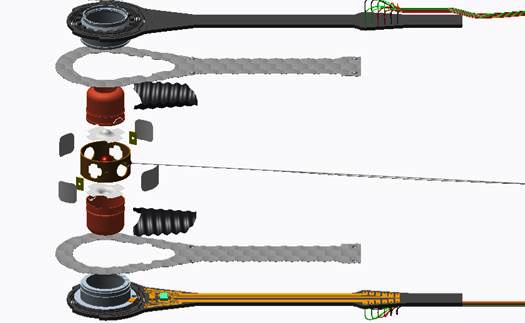
Target model showing individual components.
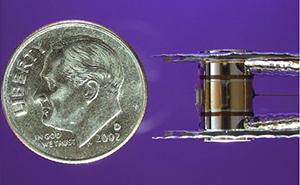
Target microassembly compared to a dime.
Adhesives for deep cryogenic operations
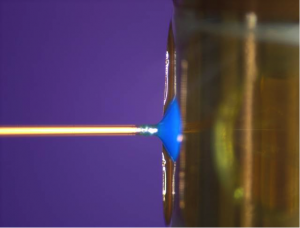
We implement a range of functional adhesives that provide high thermal and electrical conductivities and also maintain flawless gas-tight integrity of the assembly at temperatures of 20 K (-253 oC). Our forte is both in the understanding of the activation of the surfaces as well as the performance of engineered adhesives that are used in volumes ranging from picoliters to milliliters. Our development has enabled high yield production of NIF cryogenic targets.
Thin film science
Read more about our work in thin film science on the Polymer materials page.
Cleaning and process engineering
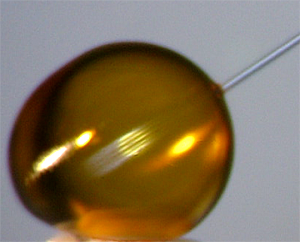
Targets are composed of dozens of fragile three-dimensional components, each of which must survive complex fabrication procedures while meeting strict tolerances for damage and cleanliness. We have an active program in developing, deploying, and maintaining processes for metrology and precision cleaning of components as they pass from materials synthesis through bonding and target assembly.
We also help NIF maintain efficient operations by tracking and scheduling complex assembly processes.
Deposition technologies for target components
Fabricating target components to exacting specifications on their size, shape, microstructure, composition, thermal properties, reactivity, residual stresses, and barrier properties requires control over a variety of deposition technologies. We control these and other physical and chemical properties by studying the electrodeposition, DC and high-power impulse magnetron sputtering, and plasma processes used to fabricate low- and high-Z target materials, as well as thermal and chemical post-processing techniques. Plating on spheres is of particular importance.
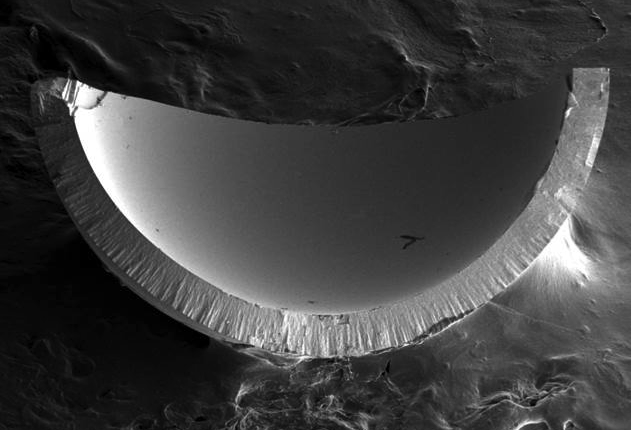
Shard from a beryllium capsule fabricated by sputtering.
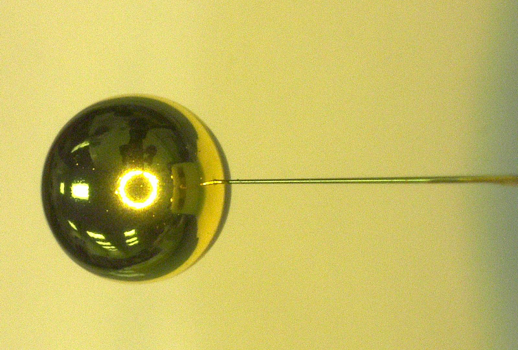
A gold shell fabricated from electrodeposition.
S Bhandarkar et. al., “Understanding the Critical Parameters of the PAMS Mandrel Fabrication Process,” Fusion Science and Technology, 70, 127-136 (2016).
SH Baxamusa et. al., "Enhanced Delamination of Ultrathin Free-Standing Polymer Films via Self-Limiting Surface Modification" Langmuir, 30, 5126-5132 (2014)
S Bhandarkar et. al., "Novel Strategies to Remove Particulate Contamination from Ablator Capsule Surface" Fusion Science and Technology, 63, 177-189 (2013)
SH Baxamusa et. al., "A Solvent Cleaning Process for the Outer Surface of Plastic ICF Capsules" Fusion Science and Technology, 63, 169-176 (2013)
M Stadermann et. al., "Radiation tolerance of ultra-thin Formvar films" Applied Physics Letters, 101, 071908 (2012)
S Letts et. al., "Quality Assurance and Characterization of Adhesives Used for NIC Target Assembly" Fusion Science and Technology, 59, 63-69 (2011)
S Bhandarkar et. al., "Removal of the Mandrel from Beryllium Sputter Coated Capsules for NIF Targets" Fusion Science and Technology, 51, 564-571 (2007)




